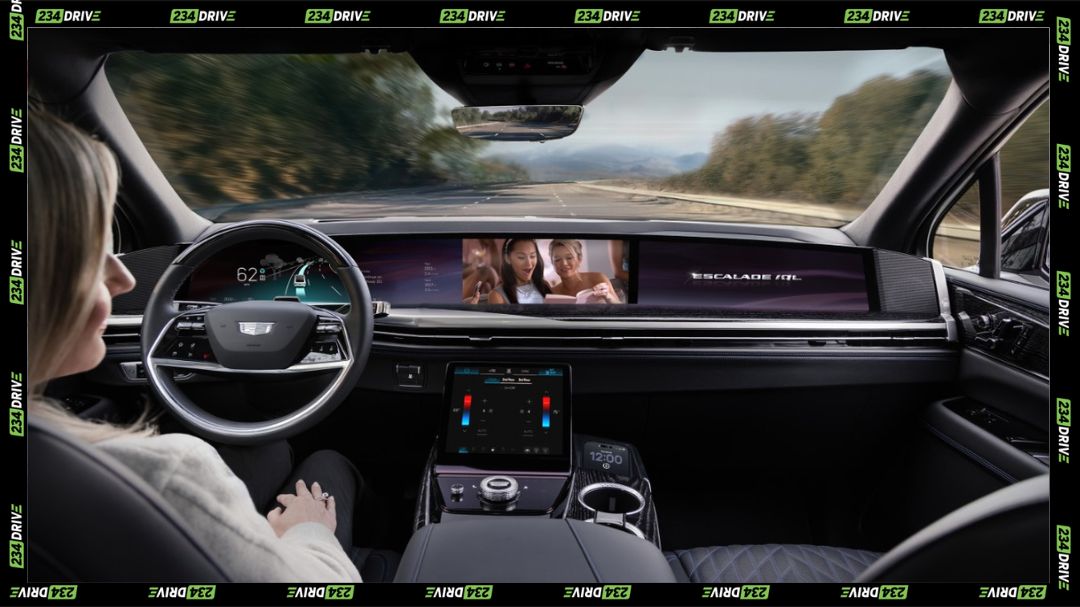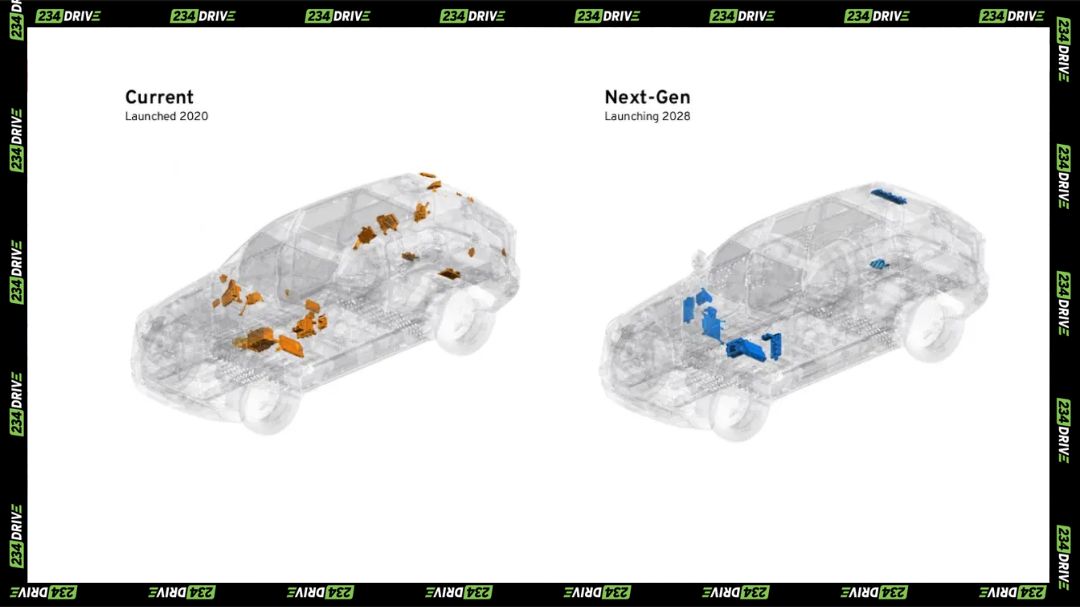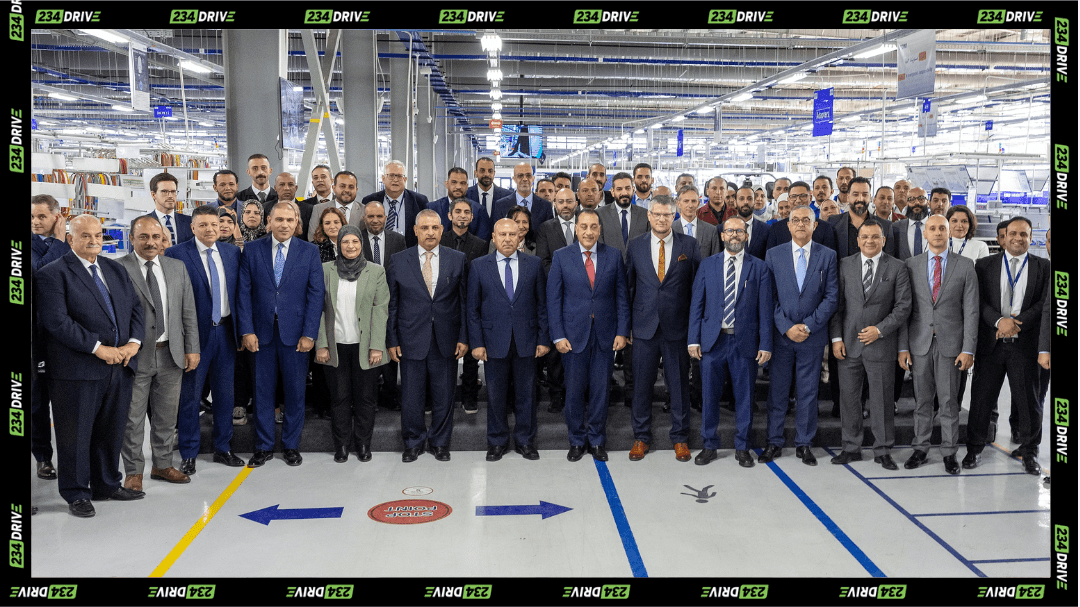General Motors just took a major step toward the next phase of autonomous driving. At its GM Forward event in New York City on October 22, 2025, the automaker announced that its upcoming eyes-off driving system—a Level 3 autonomy feature—will debut in 2028 on the Cadillac Escalade IQ. This marks the company’s most significant leap since the introduction of Super Cruise and signals a long-term pivot to AI-driven, software-defined vehicles.
The announcement centred on a key upgrade: hands-free and eyes-off driving on mapped highways. Unlike current Level 2 systems such as Super Cruise, this new setup will allow drivers to take their attention off the road under specific conditions, with the car handling acceleration, braking, and steering autonomously. Still, drivers will remain responsible for intervening when the system requests. The new technology runs on Nvidia’s Drive computing platform paired with lidar sensors and advanced radar, providing real-time object detection and route decision-making. The system builds on more than 700 million accident-free miles logged by Super Cruise users, according to GM’s internal safety data. The system’s transition to lidar and AI-based mapping offers deeper situational awareness, promising smoother lane changes and higher reliability across long highway stretches.

The move reflects GM’s broader technological realignment after halting its Cruise robotaxi operations in 2023. Many of Cruise’s former engineers are now contributing to GM’s consumer autonomy division, integrating lessons from driverless fleet testing into personal vehicles. While some expected GM to chase Level 4 capabilities immediately, the company instead opted for a measured rollout—prioritising trust and regulatory compliance before expanding to city roads. CEO Mary Barra described this stage as “a bridge to full autonomy,” leveraging existing Super Cruise data and adding AI-based improvements that could later scale to urban driving.
Parallel to autonomy, GM confirmed a deep integration with Google Gemini AI, a conversational assistant launching in 2026. Gemini will enable voice-controlled navigation, vehicle diagnostics, and route suggestions across future models. Drivers can ask the car to schedule maintenance, recommend charging stops, or explain dashboard alerts. While Gemini enhances the infotainment experience, it’s distinct from the driving software stack. GM has clarified that Gemini handles communication and vehicle interaction, while all safety-critical functions remain under GM’s in-house control. This balance preserves user convenience without risking autonomy safety.
The company also introduced a unified computing platform: a high-speed, Ethernet-based system connecting propulsion, safety, and infotainment networks. This core enables rapid over-the-air updates and supports 35 times greater AI performance than current models. Starting with the Escalade IQ, all future GM vehicles will be software-upgradable, allowing post-purchase features and ongoing performance enhancements. Over time, this infrastructure could redefine ownership, letting vehicles evolve continuously instead of depreciating through obsolescence. The plan aligns with GM’s goal to transition from a hardware-focused manufacturer to a digital mobility platform.
On the safety front, GM executives emphasised the role of automation in reducing fatigue-related crashes. Studies from agencies like the FMCSA and CDC show that distracted or drowsy driving remains a major risk, particularly for long-haul travel. The eyes-off feature won’t initially extend to commercial trucking, but its highway focus suggests indirect benefits for the sector. Fatigue mitigation technologies built into future systems could one day help professional drivers cover long distances more safely, addressing one of the logistics industry’s biggest pain points.

GM’s announcement also ties into a wider sustainability and AI ecosystem. Through GM Energy, the company will begin leasing home battery systems in 2026 that connect with electric vehicles for bidirectional charging, enabling backup power and energy-sharing functions. This infrastructure will link with future autonomous vehicles, letting them act as mobile energy nodes in smart grids—a concept that blends transport and energy resilience. Meanwhile, GM’s Autonomous Robotics Center in Michigan is training collaborative robots (cobots) for safer manufacturing, feeding automation learnings back into its vehicle development pipeline.
The bigger picture? GM is positioning itself as the automaker that fuses AI with real-world safety data at scale. Its competitors—Tesla with its vision-only Full Self-Driving and Mercedes with low-speed Level 3—have taken different paths. GM’s lidar-based, highway-first model may not be the flashiest, but it’s the most defensible from a safety and compliance standpoint. Reports from the GM Forward showcase suggest the company is betting that steady execution will win consumer trust faster than bold promises.
By 2028, GM expects to have fully operational Level 3 autonomy on major highways, supported by nationwide mapping and continuous AI updates. The leap from hands-off to eyes-off driving marks a pivotal step toward cars that think, learn, and evolve over time. The question now is whether regulators and consumers will adapt quickly enough to let the technology reach its full potential.









